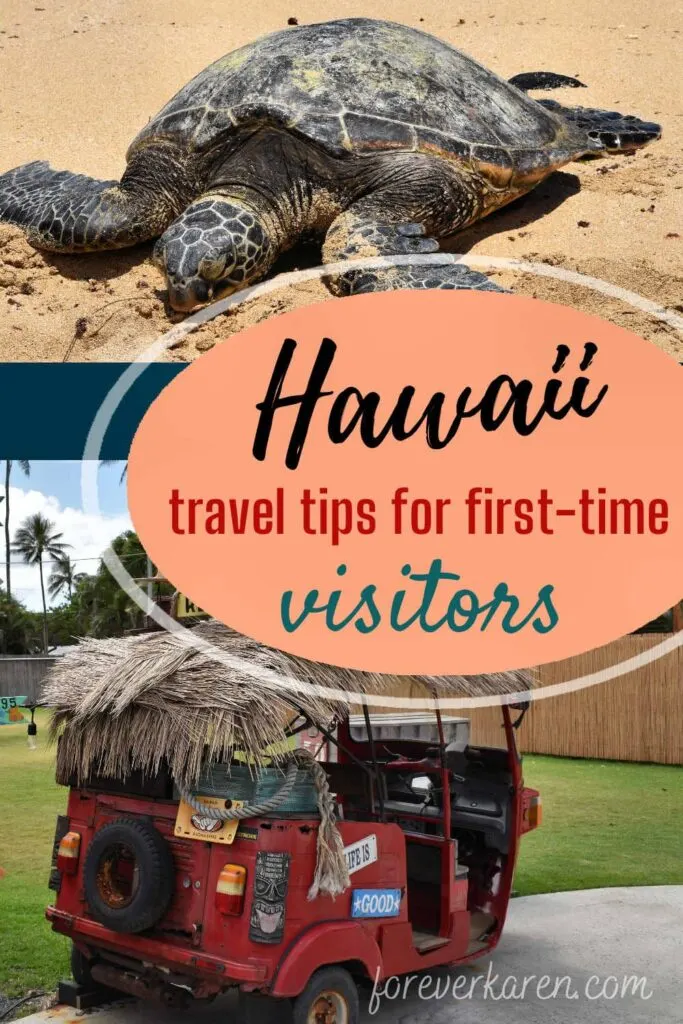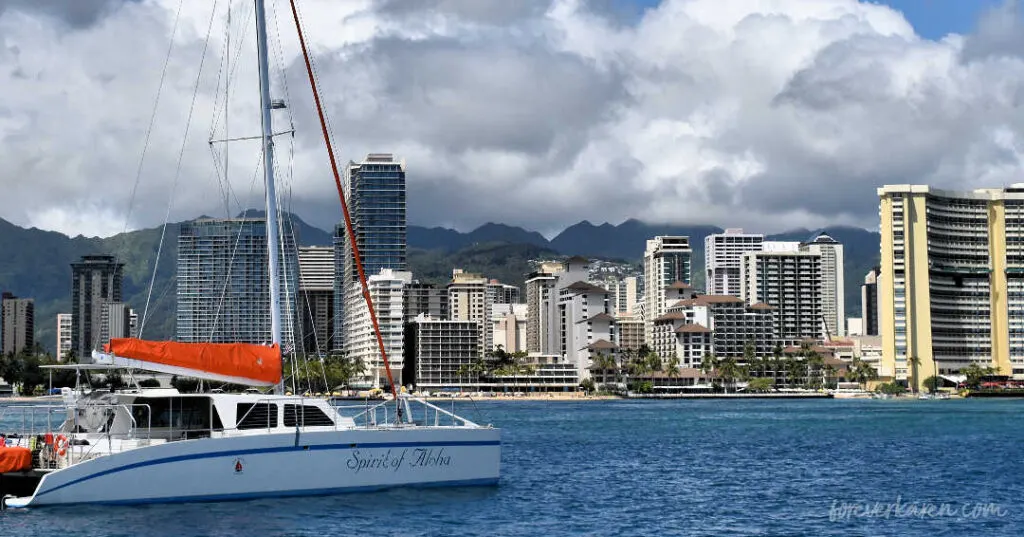
The archipelago islands of Hawaii attract visitors to its perfect year-round climate, scenic landscapes, and relaxing Aloha lifestyle. If it’s your first time in Hawaii and traveling from the United States mainland, you don’t need a passport.
Being the 50th state, it has familiarities that allow visitors to enjoy known restaurants and favorite shopping venues, all using the US dollar.
However, travelers new to Hawaii should be aware of some rules and avoid costly mistakes that can ruin their vacation.
Don’t Rent The Wrong Vehicle
Regardless of your chosen island, most vacationers rent a vehicle. Hawaiian car rental companies offer mostly soft-top Jeeps and Mustang convertibles. While I’ve rented both, I do not recommend either of these vehicles for several reasons.
Hawaii, although a peaceful state, suffers from high crime. So, if you rent one of these vehicles, you stand out as a “tourist” instead of blending in with the locals.
While a soft top allows you to enjoy the sunshine and trade winds, the soft top doesn’t deter thieves. During our last trip to Hawaii, someone slashed the top of our Jeep. It was a pointless act of crime since there was nothing inside.
We had requested another vehicle, but when we arrived, our only option was the Jeep. Next time, we’ll stick to our guns and walk away if they try to substitute our rental car.
Some travelers choose Jeeps to take off-road. Places like the unpaved route at the end of the Road to Hana highway are popular with adventurers.
However, rental car clauses do not allow visitors to take vehicles off-road. Should you do so and suffer a mishap, your insurance won’t cover you. So, you’ll be up the creek without a paddle or just a Jeep!
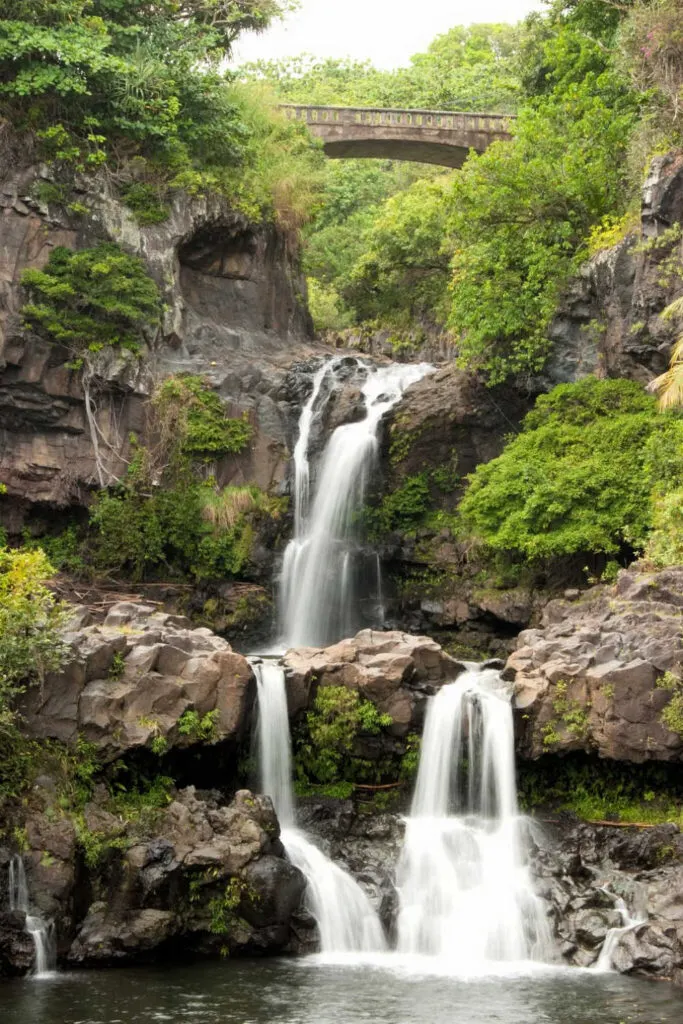
I found this out the hard way, but a convertible doesn’t keep out mud. Every time I see a Mustang, I reminisce about when I rented one to drive the Road to Hana Highway.
I was on a Hawaiian cruise and stopped at Hilo for the day, along with thousands of other passengers. Many of them also chose to drive the famous Maui rollercoaster.
With a traffic jam, the person behind me lost patience and stepped on the gas to pass a group of cars. As he passed, he hit a puddle of mud and oil, covering me and the inside of the convertible.
Not only was it the wrong decision to rent the convertible but a bad day to wear white, ALL white.
Hawaii Isn’t Cheap
While Hawaii is the 50th state, prices on everyday items might surprise you. I was shocked to learn a Dole pineapple from the plantation was USD 8, yet I could buy the same one shipped to Canada for CAD 3 from my supermarket.
Mind you, for USD 8, I could buy one almost the day it was picked. I found fresh fruit extremely expensive, with stores wanting twice as much as I could buy back home.
My friends who vacation in Hawaii often pack their favorite cereal, coffee, and non-perishables to avoid the high prices.
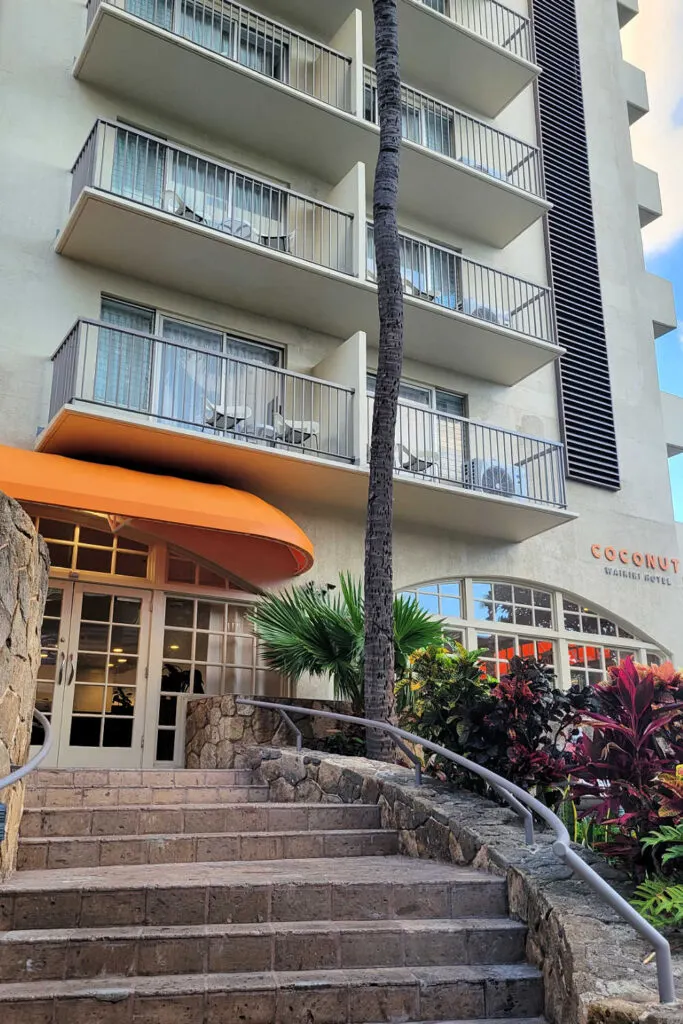
First-time visitors in Hawaii might find hotels expensive too. Find one further from the beach without an ocean view to save money. Choosing a hotel with a kitchenette can save money on meals. I stayed in a suite at the Coconut Waikiki Hotel, and the kitchenette saved me money on buying breakfast.
Staying in a more remote location can help keep you within budget. Also, bear in mind, that all Waikiki hotels charge a fee to park a rental car.
While the hotels come with a high price tag, there are lots of free activities on Oahu. So, whether you’re vacationing as a couple or traveling with children, you can enjoy Hawaii without breaking the bank.
Eating out costs more too. Don’t be surprised to pay higher prices at even chain restaurants. Since I’m Celiac, I found it easier to find gluten-free options in Honolulu, maybe because it’s a metropolitan city.
The Islands Are All Different
While the Hawaiian archipelago islands are the result of volcanoes, I was astonished to discover their differences. Having cruised from Vancouver to Hawaii, I explored the unique landscapes of Oahu, Maui, Kauai, and Hawaii.
Those who prefer the conveniences of home and bustling cities are suited to Oahu. Its capital, Honolulu, offers sandy beaches, lively nightlife, first-class shopping, and many attractions.
With everything compact in Waikiki, there’s no need for a car when staying downtown.
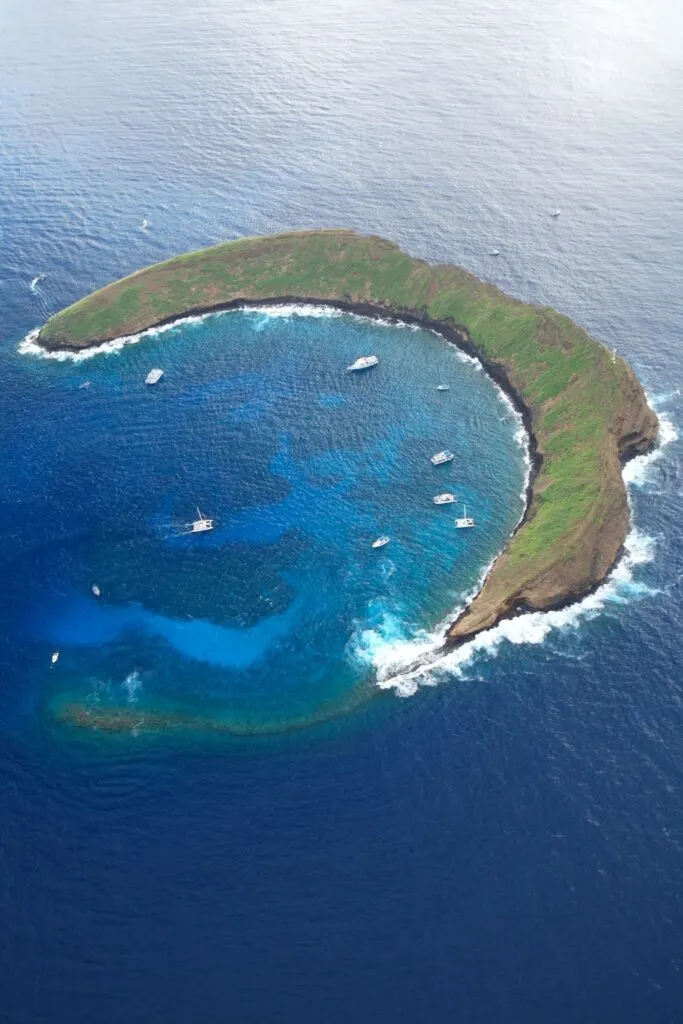
Kaui and Maui Islands suit those who like a slower pace, fewer crowds, and pristine beaches. Sunrise at Haleakala, the Road to Hana, and snorkeling at Molokini Crater are fantastic adventures when needing a break from the beach.
Its many hiking trails at Haleakala Crater also provide some solitude and a chance to explore a multitude of climatic zones.
Of the 20 global climatic zones, travelers to Maui can experience 17 of them! Make sure to pack a light jacket because temperatures can change more than 40 F during the ascent.
Hawaii or the Big Island’s star attraction, Kilauea, brings visitors to study an active volcano. As the name suggests, the Big Island is the largest in the archipelago and the youngest in the chain. On the northeast coast, Hilo receives a lot of rain, contributing to spectacular Big Island waterfalls.
Kona in the southeast has a contrasting climate that’s perfect for growing its famous Kona coffee. Because Mauna Loa protect this side from winds, the waters are clearer and calmer. For the ultimate adventure, consider a night snorkel with the manta rays.
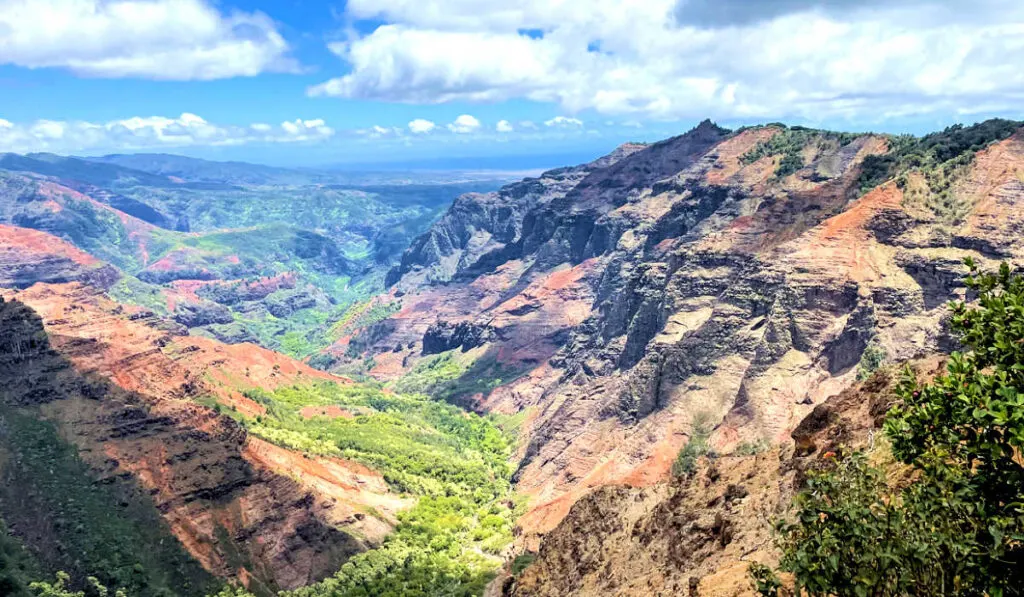
Those who prefer more solitude and less development should visit Kauai instead. Its cinematic landscapes and natural beauty are breathtaking. Movies like Jurassic Park, Pirates of the Caribbean, King Kong, and White Heat featured the “garden isle’s” landscapes.
For those that haven’t seen the Grand Canyon, Kauai’s Waimea Canyon or “The Grand Canyon of the Pacific” wows its visitors with a copycat in tones of sage and tangerine.
Buy Reef-Safe Sunscreen
With crystal clear waters and an ideal climate, no visit to Hawaii is complete without swimming and snorkeling. However, Hawaii has banned sunscreen that contains the ingredients octinoxate and oxybenzone.
These additives bleach the coral formations causing harm to the marine ecosystem.
So, purchase reef-safe sunscreens at local ABC Stores in Hawaii. Alternatively, you can buy these recommended brands for a lower price at home.
Badger Natural Mineral sunscreen
Sun Bum moisturizing sunscreen with vitamin E
Suntegrity unscented sunscreen
All Good sport sunscreen lotion
Little Hands organic sunscreen butter
Babo Botanicals for sensitive skin
Reef Repair kid-safe sunscreen
Banana Boat family-friendly sunscreen
Buying a sunscreen that’s eco-friendly not only protects you but the environment too!
Don’t Underestimate The Ocean
While parts of the Hawaiian Islands offer sheltered beaches with calm waters, other beaches have strong undercurrents and rip tides. Pay attention to signage, and don’t swim at beaches with “no swimming” signs.
Also, when snorkeling over coral, be careful of shallow areas as currents can drag you over sharp reefs, resulting in injury.
Beginner swimmers should stay in shallow waters over sandy bottoms. Popular snorkeling areas like Hanauma Bay or Waikiki Beach have lifeguards who warn swimmers of changing tides.
When touring Hawaii, take extra care near blowholes and places with crashing waves. I remember stopping at Halona Blowhole Lookout on the Kalaniana’ole Hwy one day. I witnessed a crowd of people on the rocks close to the water’s edge.
As one giant wave approached the land, the people scrambled to escape. Unfortunately, the wave swept one person off the rocks and left him fighting for his life in the treacherous waters. Luckily, he survived and has a chilling tale to tell.
Leave Nothing In Your Vehicle
Regardless of which vehicle you rent, leave nothing in your car wherever you’re parked. I knew of the dangers of theft before my first visit to Hawaii. In fact, some parking lots warn tourists not to leave anything behind.
Popular beaches and tourist attractions like Hanauma Bay are hot spots for break-ins. I remember parking at Kualoa Regional Park on Oahu one day.
I saw a local in an old pick-up truck watching people come and go. Looking very suspicious, I made sure he saw I noticed him. After emptying my car and trunk, I took a picture of him and his license plate.
I might have been overly cautious, but after the mishap with the Jeep, I wasn’t leaving anything to chance. And who knows, maybe the local thought I was taking his picture to make him famous!
Don’t Harass Wildlife
Sea Turtles are a protected species in Hawaii. In particular, the green turtle is endangered, so every effort has been made to ensure its survival and recovery.
There are lots of places to see turtles in Oahu and on other islands, but please keep your distance. It recommends humans remain at least three meters or ten feet from a turtle. While they look cute with those large, beady eyes, do you really need that selfie?
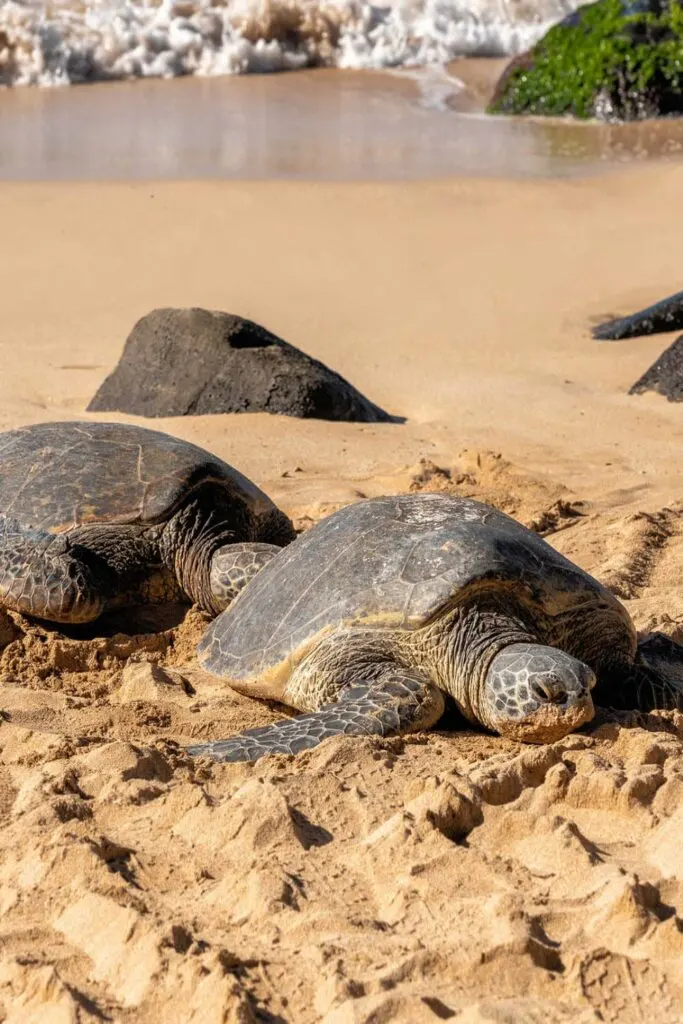
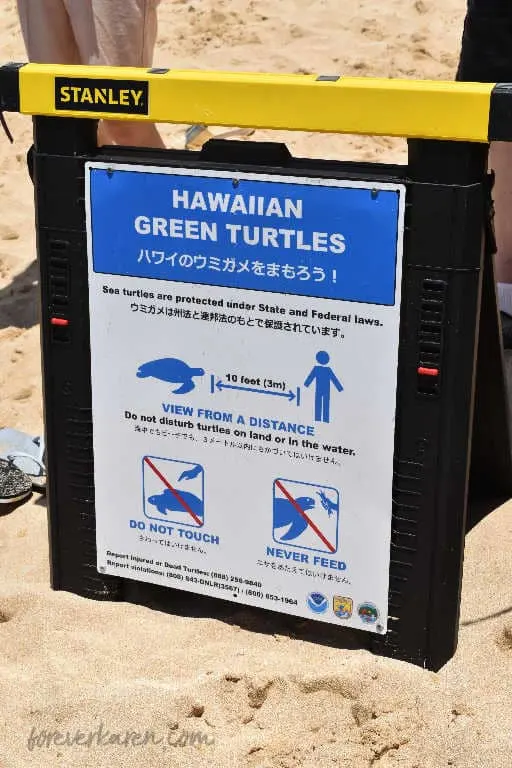
Monk seals are another protected species. Although rarely sighted, travelers should not approach, touch or feed one.
Spam Is A Delicacy In Hawaii
Growing up, I watched Monty Python and remembered all too well the sketch that involved Spam, Spam, egg, and Spam. So, I was shocked to discover that Spam is a delicacy in Hawaii.
Being half British, Spam was only eaten when there was no money for anything else. Spam was produced during World War II as a staple to feed soldiers. Today, there’s a love-hate relationship with Spam.
Some love it, while others can’t get over its texture and unknown ingredients. The locals love Spam so much that you can buy it at McDonald’s and Burger King.
But rather than eat it from the can, people have found creative ways to turn this processed meat into something extraordinary. A favorite recipe, Spam Musubi (pronounced moo-soo-bee), is made from Nori seaweed, rice, and Spam, of course.
Gone are the days of classic Spam in a can. In Hawaii, stores sell unique flavors such as Spam Teriyaki, Spam Jalapeno, Spam with bacon, Spam hickory smoke, and Spam lite.
With its explosion in popularity, Oahu now hosts the annual Waikiki Spam Jam event, which draws over 25,000 people to try its tasty Spam recipes.
It Can Rain Every Day
While the Hawaiian Islands are in the middle of the Pacific Ocean, you’d expect warm or hot weather every day. That’s true, but being the “Rainbow state,” it rains too.
How do you think it stays so lush and tropical? On most days, rain usually happens in the early morning. Another reason not to rent a convertible!
However, it can go from scorching heat to pouring rain at any time of day and back to sunshine in a matter of minutes. So, pack accordingly by bringing a lightweight jacket, especially when hiking.
Oh, and don’t forget your camera to capture those vivid rainbows.
Hawaii Has Feral Chickens
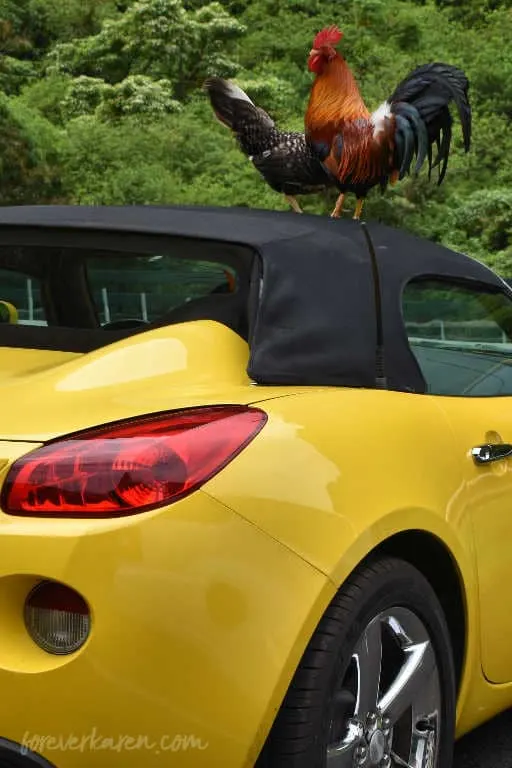
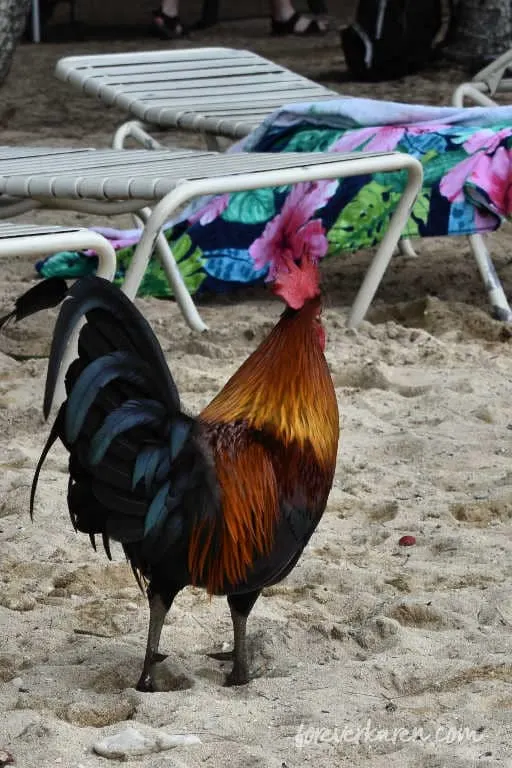
First-time visitors to Hawaii might be astonished to see feral chickens. While the chickens congregate anywhere, they are more prevalent in Kauai.
There are various stories about how chickens became wild, but the more believable story is the result of Hurricane Iniki. In 1992, the hurricane hit Kauai, destroying chicken coops that allowed domestic chickens to escape.
With no natural predators, the chicken population has exploded. I remember my first time in Hawaii and seeing lots of chickens mingling with cats in a parking lot. It surprised me that the cats didn’t make chase. Well, at least now I know the answer to:
“Why did the chicken cross the road?” To get to Kauai, of course!
Honolulu Rush Hour Is Brutal
Honolulu often makes the top ten list for the wrong reason. Its rush hour traffic compares to that of Los Angeles. When arriving in Hawaii, try to avoid the H-1 and H-2 Interstates between 6:30 am to 8 am, and 3 pm to 6:30 pm.
So, plan your days by hitting the road after 8 am. Then returning in the early afternoon or after the rush hour has ended. For short trips in Waikiki, forget the car and use a Biki bike instead.
The self-service rent-a-bike offers inexpensive plans for as little as USD 3.50 for a single ride or USD 15 for unlimited 30-minute rides within one month. With over 130 locations, visitors can easily pick up and drop off a bike throughout Waikiki.
Don’t Hike On Private Property
Throughout the Hawaiian Islands, travelers will become familiar with the word “kapu.” Found on fences and gates, the simple four-letter word means “forbidden.”
Many of these forbidden areas are sacred places or ancient burial grounds. So, should you stumble across one of these signs, be respectful and do not trespass.
On Oahu, one of the biggest problems of trespassing is at the Haiku Stairs. Better known as the “Stairway to Heaven,” the hike is a grueling climb with rewarding views.
Due to unstable conditions, it’s unlawful for hikers to climb the trail’s 3,922 steps. The issue has become such a problem in adjacent neighborhoods that security guards patrol the area. The police issue fines of USD 1000 to those caught trespassing.
So, be safe, don’t trespass, and pick a hiking trail that’s maintained.
Hawaii Has Lava Tubes
Due to so much volcanic activity, Hawaii’s lava tubes are a fascinating attraction to first-time visitors. As molten lava runs underground, it creates a hardened crust as the lava runs out.
Some of these lava tubes collapsed as they hardened. But those that have survived are usually found close to the eruption site.

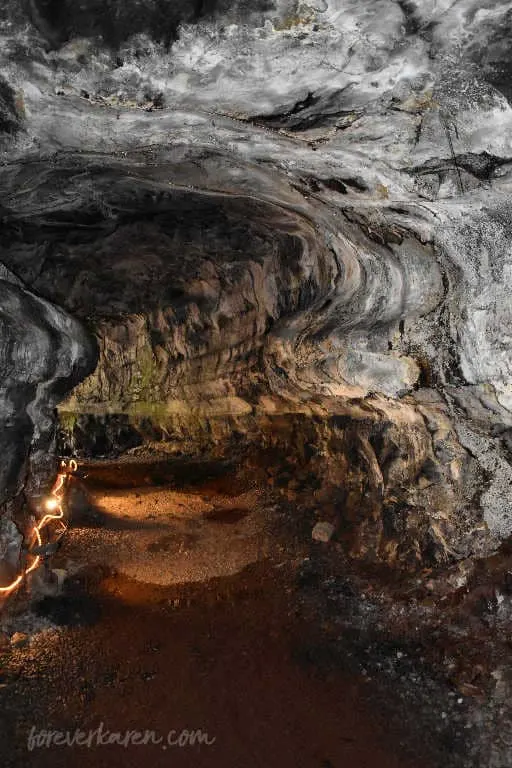
Hawaii’s lava tubes vary in size. Some are small, requiring adventurers to crawl through their cave structures. Others, like the Thurston Lava Tube in Hawaii Volcanoes National Park, are large and lengthy. Here are some places to view lava tubes in Hawaii:
- Thurston Lave Tube in Hawaii Volcanoes National Park – Hawaii.
- Hana lava tube on the Road to Hana – Maui.
- Kaumana Caves – Hawaii.
- Lava tube on the Kalaniana’ole Hwy – Oahu.
- Kula Kai Caverns – Hawaii.
- Royal Kona Coffee Center lava tube – Hawaii.
Horn Honking Is Taboo
In most countries, drivers give a friendly honk of the horn to prevent an impending collision. But sometimes, they use it to signal a friend, get attention, or do it out of rod rage.
However, in Hawaii, the locals only use the honk in cases of emergency. So, should you give someone a friendly horn honk, you might be met with evil eyes. It’s best to go with the flow, enjoy the Aloha spirit and stay off the horn.
Be Properly Equipped For Hiking
Many of the islands in the Hawaiian archipelago offer unique hiking trails to spectacular waterfalls and peaks with breathtaking vistas.
But, before you head out for a hike, make sure you’re equipped for your chosen route. Be aware that some trails experience different climatic zones, so carry layers and a jacket if it rains.
Since it rains a lot, paths may be slippery. Ditch the flip-flops and wear supportive hiking boots instead. Boots with good tread will help prevent falls and injuries.
Plan to hike in daylight to avoid stumbling around in the dark and getting lost. Be aware that cell coverage may be non-existent on remote hikes.
With high humidity and daylight temperatures, you’ll need to carry a lot of water or electrolyte drinks. Depending on the length of the hike, you should have a liter of water for each hour.
Combine your fluids with protein bars, nuts, granola, and energy snacks to keep up your energy.
Some Of Its Volcanoes Are Active
The Hawaiian Islands have six active volcanoes, with four of them on Hawaii or the Big Island. Of the four, Kilauea has erupted approximately fifty times in the last century and is closely monitored for activity.
Most of its eruptions happened in the last 35 years, causing widespread damage. In 1990, a devastating explosion consumed Kalapana, a small fishing village on the coast.
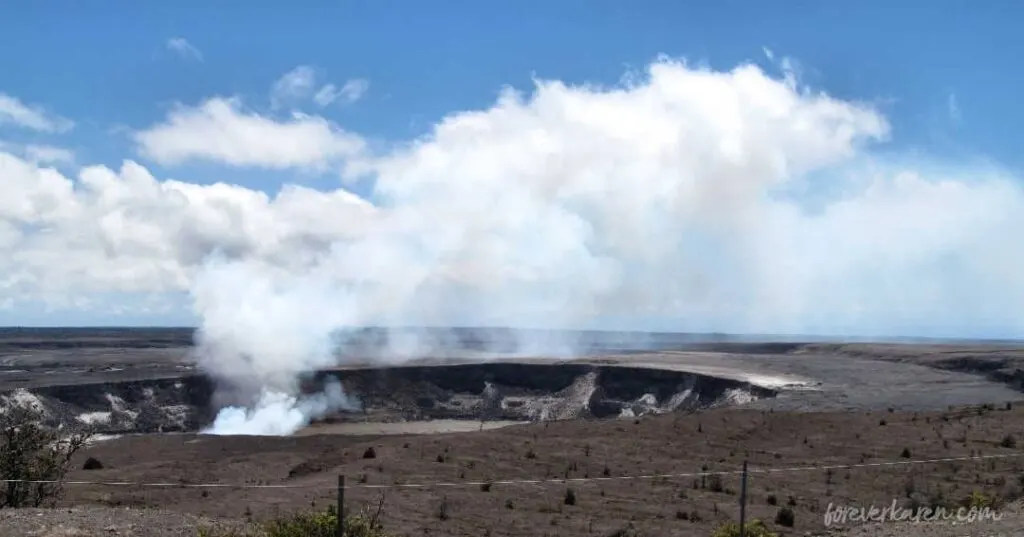
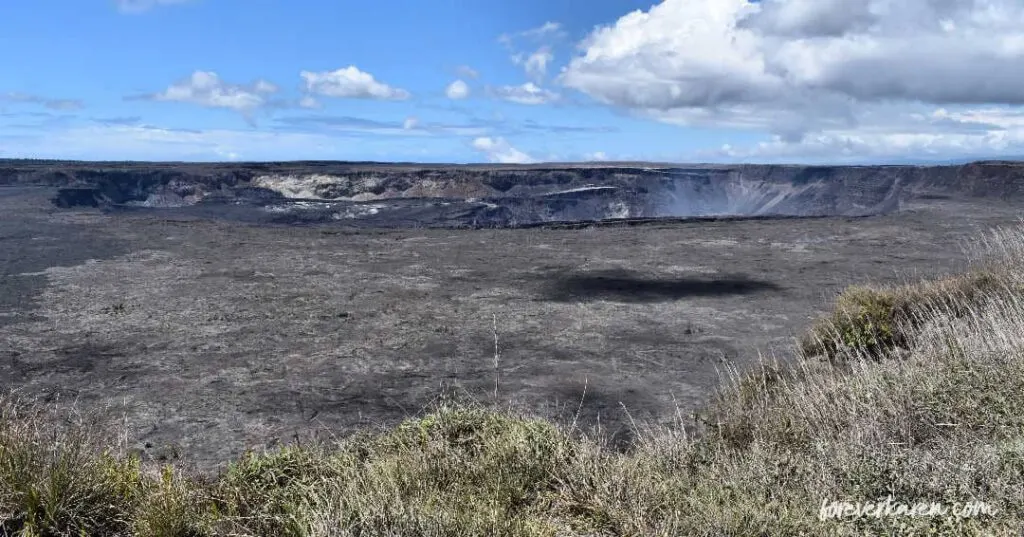
If you’re planning to visit the Island of Hawaii, check the government website to get up-to-date information on Kilauea and park closures. I’ve visited Hawaii Volcanoes National Park on three separate trips and was astonished at how much the volcano changed.
The first time it was steaming and looked relatively docile. The second time it was bubbling lava from its caldera, and lava was flowing underground and exiting in the Puna district.
In 2018, a large eruption caused the summit to collapse, and the lava lake drained out underground. When I visited a year later, the Halema’uma’u Crater had doubled in size, and the Thomas A. Jaggar Museum near the crater had closed due to damage.
Don’t Touch The Coral
When snorkeling in the ocean, it’s important not to touch or stand on coral. Coral is fragile and can break easily. Coral reefs are more than just marine organisms, they support other aqua species.
Hanauma Bay, one of Oahu’s most popular tourist attractions, allows visitors to explore the undersea world of this sheltered cove.
Attracting approximately one million travelers yearly, the park’s reefs have suffered due to sunscreen and snorkelers damaging the coral.
When the pandemic happened in March 2020, the park closed, and for the first time, the ocean was void of humans. This gave researchers a chance to observe the coral and watch it heal and flourish again.
Knowing that the reefs thrived without human interaction, I have to wonder if snorkel excursions to Hanauma Bay may be limited going forward.
So, if you’re not a stronger swimmer, snorkel over the sandy bottom next to the reef. If you’re an experienced snorkeler, take a snorkeling excursion in the deeper ocean.
The undamaged reefs in deeper waters are generally teeming with tropical fish in clearer waters.
Final Thoughts
With cinematic landscapes, powdery beaches, and verdant jungles, Hawaii draws travelers for a tropical escape. After my first time in Hawaii, I yearned to return and enjoy its eternal sunshine, explore its picturesque summits, and immerse myself in the Aloha spirit.
Now, three trips and four islands later (including my honeymoon), Hawaii holds a special place in my heart. No matter how many times you visit the Hawaiian Islands, I hope they are all as memorable as your first adventure.
Happy travels ~ Karen
